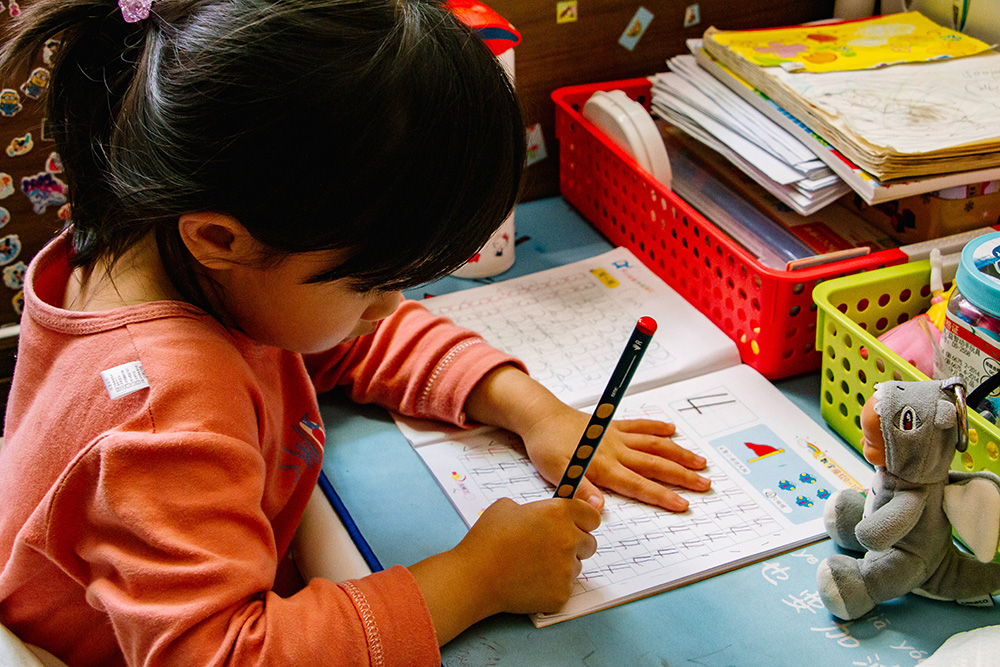The Role of Structured Literacy Instruction in Every Child's Education

In an ideal world, all students would respond well to the same teaching methods. However, in practice, what may be effective instruction for one student may not work for another. When it comes to students with learning disabilities like dyslexia, most teachers recognize their instructional approach may need to shift to help all students learn to read advanced texts.
What if we told you there was a proven approach to teaching reading that was developed specifically for students with dyslexia but could benefit all children? That approach exists, and it's called Structured Literacy.
While no single instructional program, method, or approach is ideal for all students with dyslexia—let alone for all struggling readers—there are broader types of instruction that tend to be most effective for these students. The term Structured Literacy was introduced by the International Dyslexia Association® to describe these kinds of approaches.

What Is Structured Literacy?
Structured Literacy is a science-based approach to teaching the basic concepts of reading. With Structured Literacy programs, new educational concepts and ideas are presented in a logical order, and students become proficient in one skill (like phonemic awareness skills, for example) before moving on to more difficult concepts. This systematic teaching approach provides ongoing practice in foundational literacy skills as students tackle greater challenges.
Another essential component of Structured Literacy is explicit instruction, which means educators provide direct, clear instruction about topics and provide feedback to students as they learn. Direct instruction helps ensure students have mastered fundamental concepts, like solid phonics skills or phonemic awareness skills, before moving on to higher-level skills tackled in higher reading levels. Student responses to Structured Literacy lessons show that this explicit teaching method helps prepare students to become effective readers with strong comprehension skills.

Elements of Structured Literacy Education
The content of Structured Literacy education involves key components of language and literacy that research has shown to be central in reading development and reading problems, including:
- Phonology, or the study of sounds (sometimes called phonological awareness)
- Sound-symbol knowledge, or how to match sounds (called phonemes) with written letters (called graphemes)
- Syllable instruction, which helps students break apart words into manageable chunks
- Morphology instruction, or the study of base words, prefixes, and suffixes
- Basic syntax, or the understanding of the structure of sentences and the way words grammatically flow together to build them
- Semantics, or the actual meaning of words, phrases, and sentences

Balanced Literacy vs. Structured Literacy
The explicit teaching vital to Structured Literacy is sharply contrasted by another widely used teaching method, balanced literacy. In balanced literacy teaching practices, students learn to read by being exposed to books and dedicated phonics instruction. In the balanced literacy classroom, students learn new words through contextual clues while reading in a group or independently.
Balanced literacy programs work well for some students, particularly high-income students with access to real books at home. However, other students who have not mastered literacy fundamentals can fall behind in a balanced literacy classroom. For poor readers as well as many skilled readers, a more explicit program better helps them to develop foundational reading skills.

Common Misconceptions About Structured Literacy
Most educators have heard about Structured Literacy, but many fail to take advantage of Structured Literacy practices because they misunderstand some common misconceptions about them.
Unlike what many people believe, Structured Literacy lessons are not only beneficial for children with reading disabilities like dyslexia. In contrast, Structured Literacy can be a beneficial instructional approach for all students, since it provides educators with a helpful framework outlining how to teach as well as what to teach.
Additionally, some educators think Structured Literacy is only about teaching basic level foundational skills such as phonemic awareness and solid phonics skills, not more advanced skills like writing or phonological awareness skills. In fact, Structured Literacy approaches can benefit children who need support with decoding skills, syllable patterns, and encoding skills (writing skills), including those with dyslexia, but they can benefit other types of poor readers as well. Structured Literacy is an umbrella term that encompasses multiple instructional programs and methods but which share general content elements and feature explicit and systematic instruction.
Emerging Research into Late Onset Reading Difficulties
Identifying students with dyslexia should inform educator practices, but it should not solely determine what method of instruction is used. That's because recent research has shown that some reading problems emerge only in the later grades, as late as after third grade. Educators may notice student progress slow in later elementary years unexpectedly. These later-emerging reading problems are often connected to comprehension-related weaknesses in areas such as vocabulary, syntax, background knowledge, and inferencing—weaknesses that tend to impact reading comprehension more significantly as students advance in school and the reading demands become more challenging.

Because educators may not initially identify these children as displaying reading difficulties, they may not ultimately provide the level and manner of instruction that would support most fully as they become literate. However, if properly implemented, the cumulative instruction provided by Structured Literacy approaches can boost the reading levels of these students as well as those whose reading disabilities emerge earlier and those who never display reading difficulties.
The Risks of Low Literacy
When children don't learn to read, it negatively impacts them individually, but it also negatively impacts our society. Therefore, utilizing teaching practices that yield significant, positive literacy results for the greatest number of students is not only an issue for individual school districts, it's an issue that deserves attention from our country and our global education community.
A study by the Annie E. Casey Foundation reveals that students who do not learn to read by the end of third grade are three times more likely to drop out of high school than readers at the start of fourth grade. According to the National Institute for Literacy, 43 percent of Americans with the lowest literacy skills live in poverty, and 70 percent have no job or a part-time job. Conversely, only 5 percent of Americans with strong literacy skills live in poverty.
Unfortunately, the inability to read impacts more than just an individual's job prospects and income levels. Students who don’t learn to read also have a greater likelihood of developing mental health disorders, including anxiety and depression, than students who learn to read.
The negative impacts go beyond the individual—society suffers as well. According to the U.S. Department of Justice, “The link between academic failure and delinquency, violence, and crime is welded to reading failure.” For instance, our criminal justice system is flooded with inmates who struggled in school, many because they never moved from learning to read to reading to learn. Thus, low literacy rates place greater pressure on society’s social welfare programs, which, in turn, affect the tax rates of every working American. Low literacy rates also increase crime and decrease public safety and security.
Clearly, the knowledge and skills developed alongside literacy are vital for individual and societal success.

Get Student Support With Structured Literacy Courses
To be well adjusted socially and emotionally, students require basic school skills—reading, writing, and arithmetic. School administrators and teachers can ensure reading and writing skills can be addressed through evidence-based reading instruction that includes highly knowledgeable teachers who use a curriculum like Voyager Sopris Learning's LANGUAGE! Live®, which has an appropriate scope and sequence of skills taught explicitly and systematically. Teaching with a program that uses a Structured Literacy approach like LANGUAGE! Live helps teachers engage students because the curriculum is highly interactive.
For additional educator resources, watch our webinar from Louise Spear-Swerling, Ph.D., on Structured Literacy activities for teaching students with difficulties in various areas.
